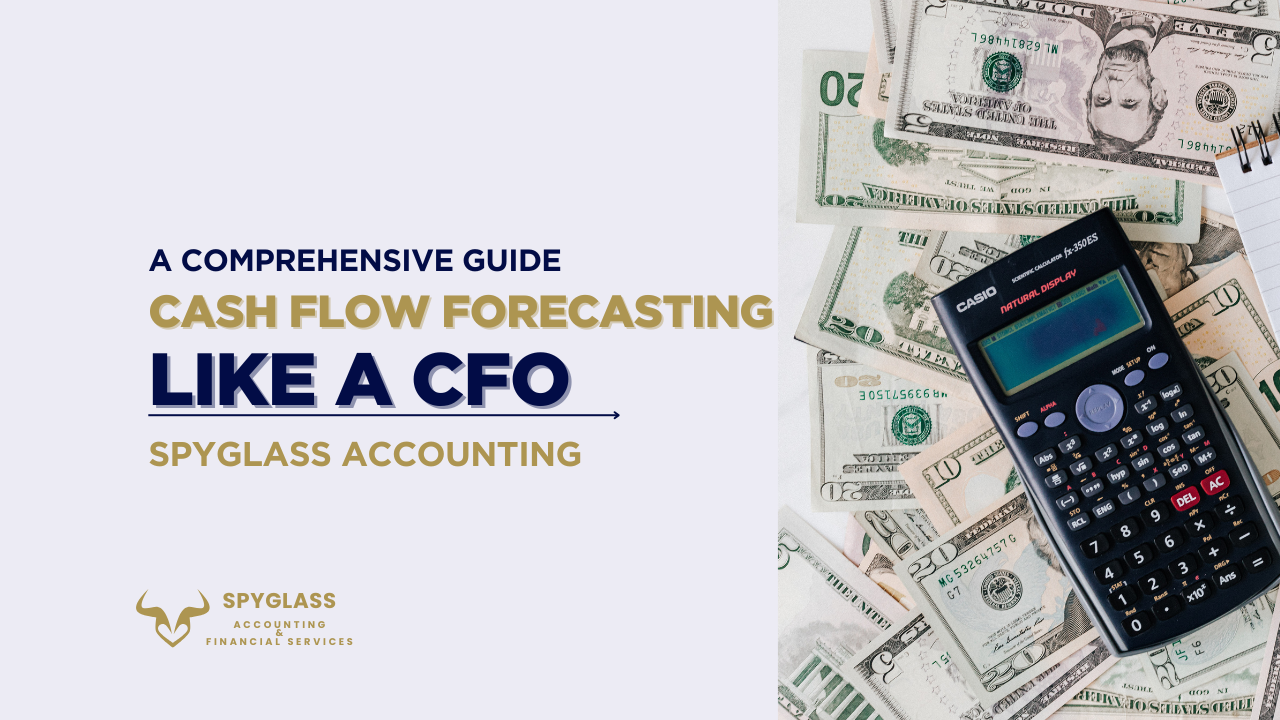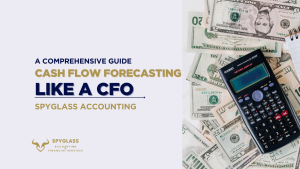
Cash Flow Forecasting Like a CFO: A Comprehensive Guide
Introduction to Cash Flow Forecasting
Why It’s the Backbone of Financial Health
What separates struggling businesses from thriving ones? Often, it’s how well they manage cash. Cash flow forecasting isn’t just an accounting exercise—it’s the lifeline of your business’s financial stability. Without a clear picture of incoming and outgoing cash, even profitable companies can face crises. It’s not just about tracking dollars—it’s about predicting when they’ll move and how that timing impacts payroll, vendor payments, and growth opportunities.
CFOs don’t rely on guesswork; they use precise forecasting to anticipate financial needs weeks or months in advance. This foresight helps prevent overdrafts, late payments, and unnecessary layoffs. More importantly, it gives you visibility into your cash runway—how long your business can operate before needing additional funds.
In today’s volatile economy—with shifting markets, supply chain disruptions, and rising competition—mastering cash flow forecasting isn’t optional. It’s essential.

The Real Difference Between Cash Flow and Revenue
Many businesses confuse revenue with cash flow, and that mistake can be costly. Closing a $100,000 deal is great—but if the client pays in 90 days and your payroll is due next week, that revenue won’t help you today.
- Revenue = What you’ve billed
- Cash flow = What’s actually in your bank account
This distinction is critical for businesses with:
- Extended payment terms (B2B, contractors, agencies)
- High upfront costs (manufacturing, retail, professional services)
Example: A digital marketing agency lands a $50,000 project but must pay freelancers and ad costs upfront. If the client pays in 60 days, the agency could be in the red before the cash arrives.
Understanding this gap helps you make smarter decisions:
✔ Invoice faster or require deposits
✔ Negotiate better payment terms with vendors
✔ Adjust spending based on real cash availability
Why Cash Flow Forecasting Matters
- Avoiding Cash Shortages and Financial Pitfalls
Businesses don’t fail because of bad products or low sales—they fail because they run out of cash. Forecasting acts like a financial radar, helping you spot upcoming shortfalls before they become emergencies.
- Tax bills
- Seasonal dips
- Unexpected expenses
A Harvard Business Review study found that poor cash management is a leading cause of startup failure. Companies overspend, overhire, or undercharge simply because they didn’t see financial storms coming.
- Seizing Opportunities with Confidence
Forecasting isn’t just about avoiding disaster—it’s about capitalizing on opportunities. If your forecast shows excess cash in three months, you can:
- Launch a marketing campaign
- Buy inventory at a discount
- Invest in team training
Without this insight, that cash might sit idle—or worse, you might realize too late that you can’t afford an expansion.
- Building Investor and Lender Trust
Investors and banks don’t just want to see growth—they want proof you can manage money wisely. A well-structured cash flow forecast demonstrates:
- Financial discipline
- Contingency planning
- Long-term viability
A HighRadius study found that 90% of corporate treasurers felt their forecasts were inadequate. By mastering yours, you gain a competitive edge.
Direct vs. Indirect Forecasting Methods
Direct Method: Short-Term Precision
- Tracks actual cash movements (bank deposits, payments)
- Best for weekly/monthly planning
- Ideal for businesses with tight cash flow (retail, services)
Indirect Method: Long-Term Strategy
- Starts with P&L statements and adjusts for non-cash items (depreciation, credit sales)
- Used for annual forecasts and investor reporting
- Less precise but useful for big-picture planning
Smart Approach: Use both.
- Short-term (Direct): Manage payroll, vendor payments
- Long-term (Indirect): Plan expansions, investments
How to Build an Accurate Cash Flow Forecast
Step 1: Track All Cash Inflows
- Customer payments
- Loans/grants
- Investment injections
- Asset sales
Example Forecast:
| Source | Expected Amount | Timing |
| Client A | $25,000 | Week 1 |
| Grant Payment | $15,000 | Week 3 |
| New Client B | $10,000 | Week 4 |
Step 2: Map & Monitor Outflows
Categorize expenses to avoid surprises:
| Expense Type | Description | Amount | Due Date |
| Rent | Office lease | $5,000 | Monthly |
| Payroll | Staff salaries | $30,000 | Bi-weekly |
| Tax Payment | Quarterly | $10,000 | Q1 & Q3 |
Pro Tip: Automate tracking to avoid manual errors.
Step 3: Calculate Net Cash Flow
Formula:
Net Cash Flow = Total Inflows – Total Outflows
| Category | Amount |
| Inflows | $75,000 |
| Outflows | $60,000 |
| Net Flow | $15,000 |
Negative cash flow? Act fast:
✔ Renegotiate vendor terms
✔ Offer early-payment discounts
✔ Defer non-essential spending
Step 4: Plan for Multiple Scenarios
Prepare for uncertainty with 3 forecasts:
- Baseline (expected performance)
- Best-Case (higher sales, lower costs)
- Worst-Case (delayed payments, extra expenses)
| Scenario | Assumptions | Net Cash Flow |
| Baseline | Steady revenue | $10,000 |
| Best Case | 20% sales increase | +$25,000 |
| Worst Case | Key payment delayed | -$15,000 |
Common Forecasting Mistakes (And How to Avoid Them)
- Over-relying on Indirect Data → Use direct tracking for short-term accuracy.
- Ignoring Seasonality → Analyze historical trends to predict highs/lows.
- Working in Silos → Involve sales, HR, and operations for real-time updates.
- Manual Errors → Ditch spreadsheets for automated solutions.

Why Partner with Spyglass Accounting?
At Spyglass Accounting, we’re not just software—we’re a team of CFOs, accountants, and financial experts who provide:
✔ Bookkeeping & Payroll Management
✔ Tax Preparation & Compliance
✔ Business & Financial Consulting
How We Help with Cash Flow Forecasting:
- Real-time data integration (banks, invoices, CRM)
- Scenario modeling for risk management
- CFO-level insights to optimize cash flow
Case Study:
An eCommerce client reduced forecast errors by 35% and gained 3+ months of cash visibility after partnering with us.
Best Practices for Ongoing Forecasting
- Review Weekly – Compare projections vs. actuals.
- Use Dashboards – Visualize cash trends at a glance.
- Collaborate Across Teams – Get input from sales, HR, and operations.
Conclusion: Take Control of Your Financial Future
Cash flow forecasting isn’t just accounting—it’s strategic leadership. By mastering it, you:
✅ Avoid financial crises
✅ Seize growth opportunities
✅ Build credibility with investors
Next Steps:
- Start tracking inflows/outflows today.
- Build multiple scenarios for better planning.
- Partner with experts like Spyglass Accounting for precision and peace of mind.
- Download checklist pdf here.

FAQs
Q: What’s the best forecasting method for small businesses?
A: The direct method (real-time cash tracking) is best for short-term accuracy.
Q: How often should I update my forecast?
A: Weekly reviews keep you agile; monthly for long-term planning.
Q: Can forecasting help with loan approvals?
A: Yes—lenders trust businesses with data-backed financial plans.
Q: Why choose Spyglass Accounting over DIY tools?
A: We provide expert CFO guidance, not just automation—ensuring your forecasts are accurate and actionable.